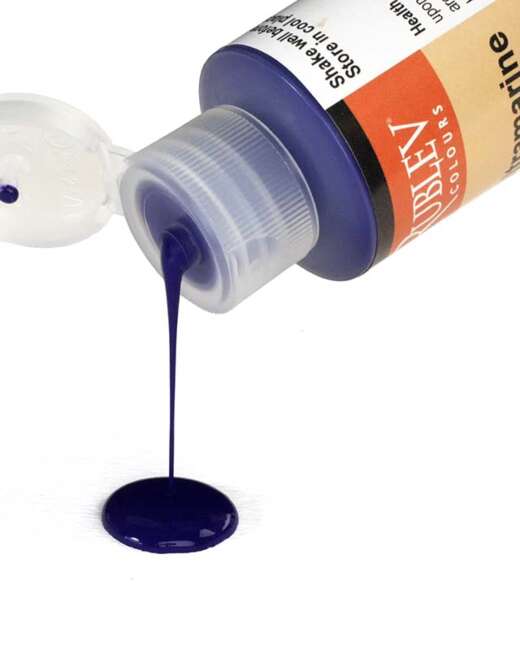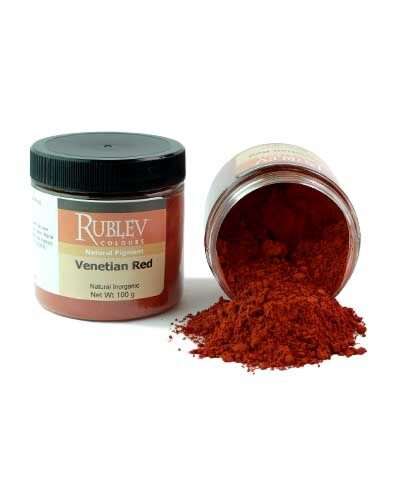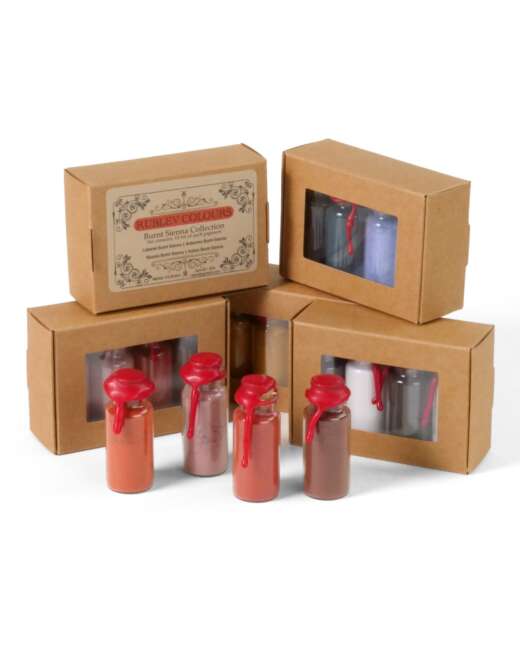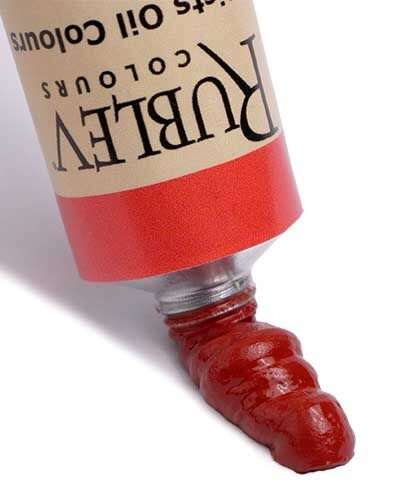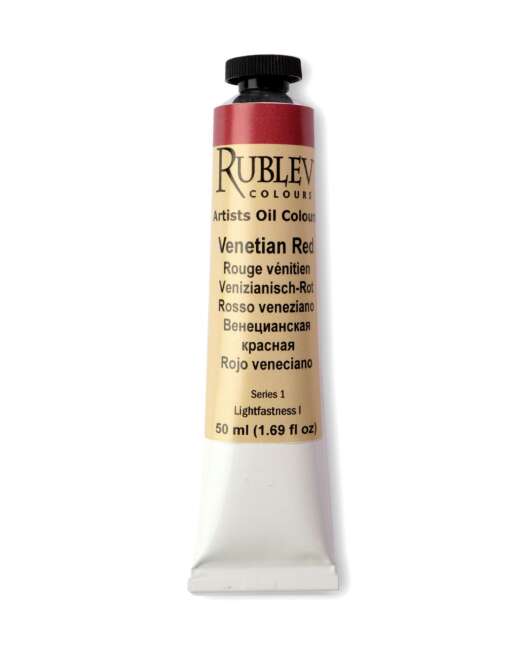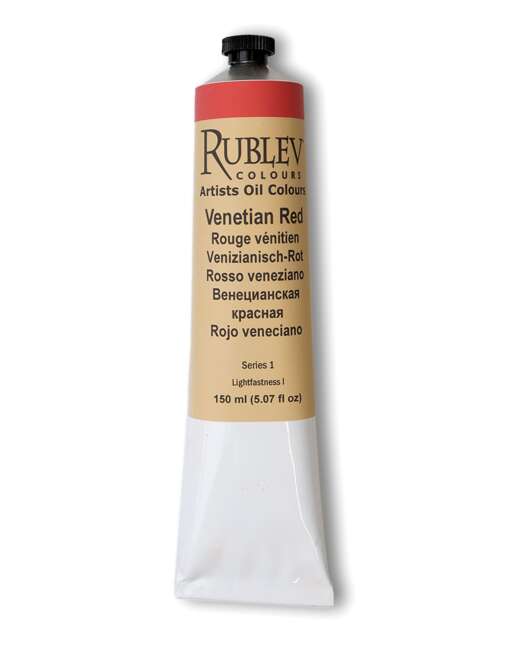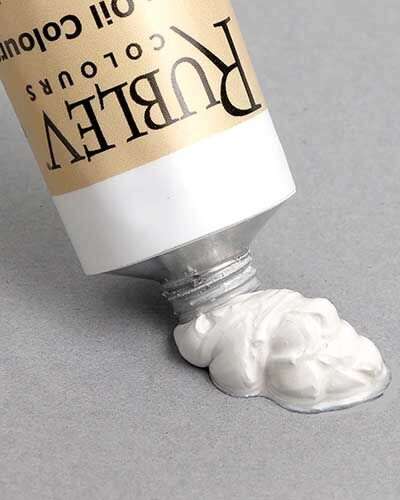Venetian Red is made from iron oxide earth, found in the Veneto region of Italy.
Rediscovering Venetian Red: The History and Artistic Legacy of a Renaissance Favorite

Venetian Red is one of many red ochers—iron oxide earth-red pigments—named after a geographical location. Other examples of red ochres include Ercolano Red, Pozzuoli Red, and Indian Red. Venetian Red consists of a natural iron oxide that is less purplish in tints and washes than other natural red iron oxides, such as Indian Red.
Venetian Red is a warm and vibrant red pigment used for centuries in various art forms, including painting, pottery, and fresco. This unique red color is derived from the mineral hematite found in the Veneto region of Italy. Venetian Red is known for its rich, warm tone and ability to maintain its vibrancy over time.
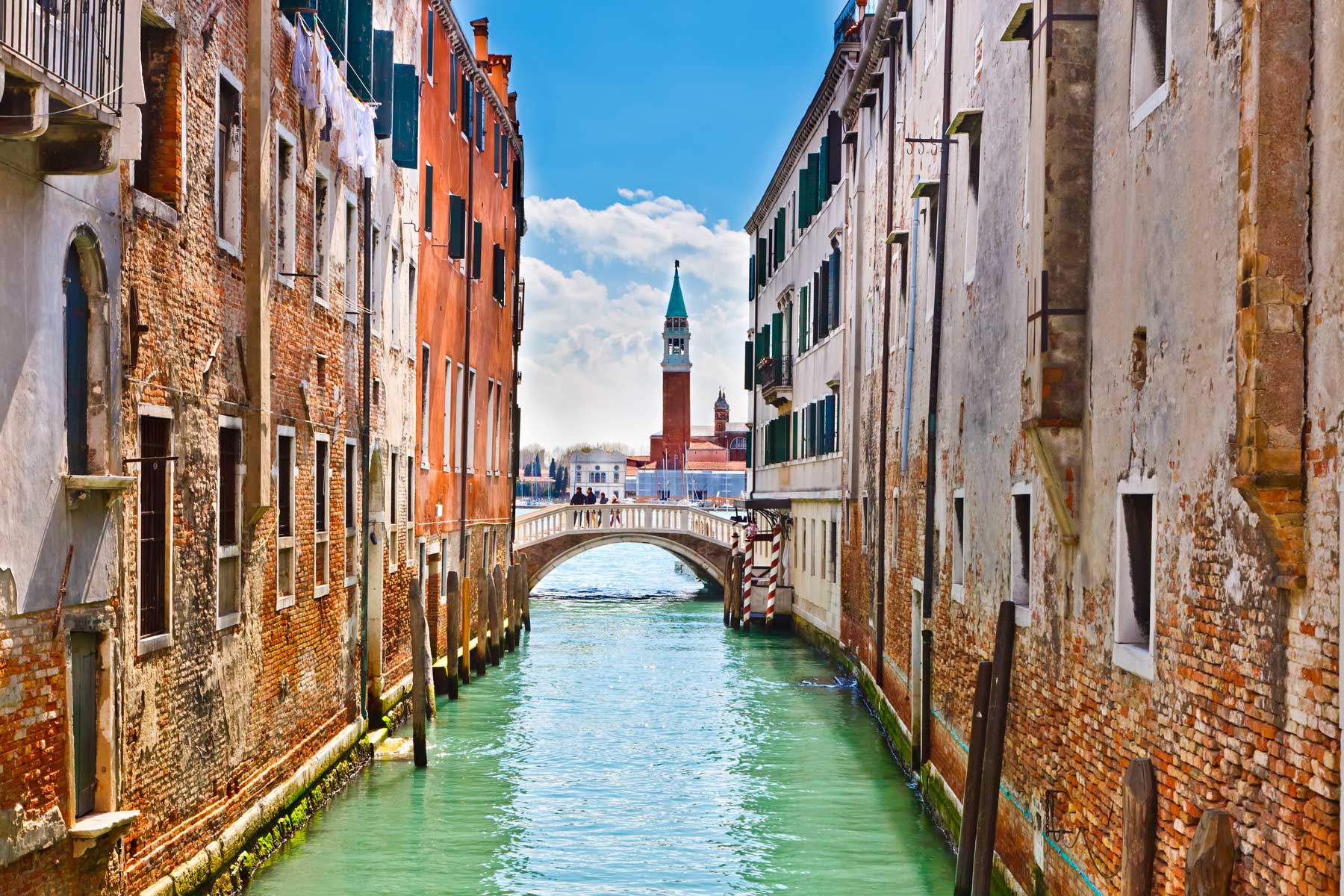
Besides its use in painting, this earth was formerly employed in making the bricks on which many of the old buildings in Venice are constructed. The fine color of these bricks, heightened perhaps by their contrast with the green waters of the narrow canals, can scarcely have escaped the observation of travelers.
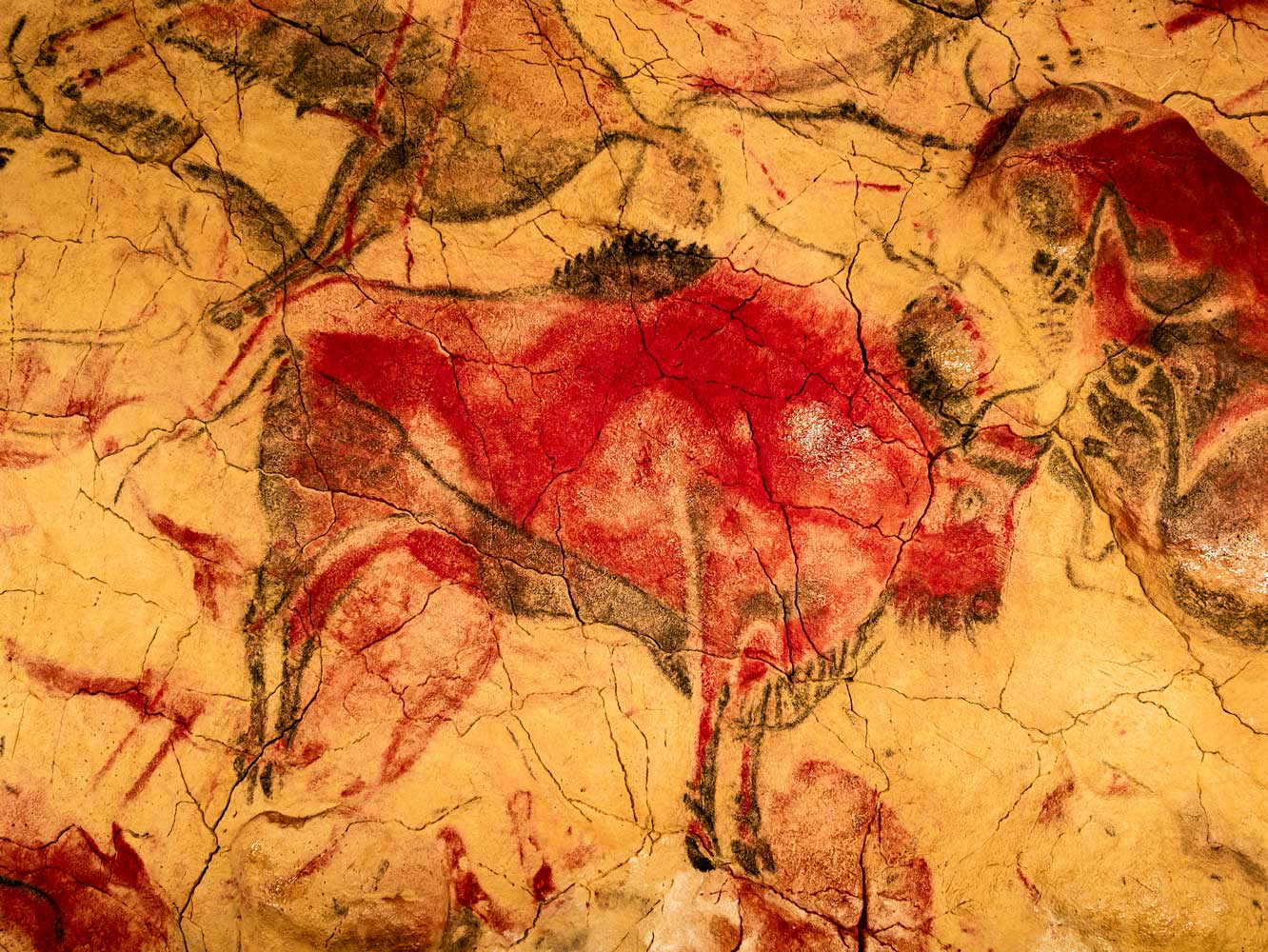
Origin and History of Venetian Red
Natural earths like ochres, Siennas, and umbers have been widely used for ritual and artistic purposes since the Paleolithic [1,2]. They are extremely stable, provide good tinting power, and are resistant to light, oxidation, and corrosion [3,4]. On artists’ palettes, ochre colors are ubiquitous, ranging from warm yellows to reds and dark browns.
The first recorded use of Venetian Red as a color name in English was in 1753. [5] That doesn’t mean that red earth from the Veneto region hasn’t been used as a pigment for far longer than that. According to Merrifield, Venetian Red was reputed to have originally applied to a naturally occurring source (now exhausted) of red ochre from Verona. [6] Identifying earth pigments from different places in paintings is not always feasible using technical analyses. It is believed that Titian (1490–1576) acquired his red earth pigments from a quarry outside Venice. However, it is probable that the matter is not as straightforward as Titian and other artists of his time would have utilized red earths from diverse parts of the world.

Titian, Self-portrait, c. 1546–47, oil on canvas, 96 cm × 75 cm (38 in × 30 in), Gemäldegalerie, Berlin
Not only was Venetian Red used to color passages in paintings of the Italian Renaissance directly, but it was also used in underpaintings. Palma Giovane describing Titian’s working method said, “he blocked in his pictures with a mass of colors, that serves as the ground... upon which he would then build. I myself have seen such underpainting, vigorously applied with a loaded brush, of pure red ochre, which would then serve as the middle ground; then with a stroke of white lead with the same brush then dipped in red, black, or yellow, he created the light and dark areas that give the effect of relief. And in this way with four strokes of the brushRed was able to suggest a magnificent figure.” [16]
Italian Renaissance paintings often featured red earth pigments. This pigment was also known as sinopia, as the highest quality version was sourced from the port of Sinop, located in northern Turkey. Venetian Red was the main component of cinabrese, a pigment mixture that the 15th-century Italian painter and author Cennino Cennini wrote about in his painting handbook, Il libro dell’arte. In his treatise, Cennini recommended combining Venetian Red with lime white in a two-to-one ratio to paint the skin tones of faces, hands, and nudes. [7]
During the 15th and 16th centuries, Venice was a significant hub of commerce due to its location on the Adriatic Sea. The city saw an influx of vendors selling pigments, referred to as vendecolori, and the import records that have endured reveal a range of materials, such as ultramarine (lapis lazuli) from Afghanistan, cochineal lake pigments from South America, smalt from Northern Europe, and various types of earth pigments, including terra rossa (red earth) and terra negra (black earth). [8] These pigments were sold to local Venetian buyers as well as distributed across Europe. It is, therefore, improbable that Venetian Renaissance painters solely relied on Venetian earth pigments, given the city’s bustling pigment trade. Georgius Agricola, a contemporary of Titian who lived in Venice, noted that painters would “select earths on the basis of their color,” suggesting they had many options to choose from. [9]
Throughout the centuries, red earth pigments were sourced from diverse locations. The names often did not designate the source of the pigment but typically the color. John Hill, the translator of Theophrastus History of Stones, mentions that what is sold in the shops as Indian Red is a natural red earth found in England. He states, “I have a specimen of some from the Forest of Dean in Gloucestershire, very little inferior to the sort brought from Ormuz in the Persian Gulf, which is so much esteemed and used by our painters under the name of Indian Red. It is indeed so like, both in colour and quality,that it is used for it, as the people employed in taking it up informed me, and sent to London to be sold under its name. On comparing it with some of the true Persian kind, which I had from the East Indies, I find it of a paler colour, but of a much finer texture.” [10]
Venetian Red was initially applied to natural red earths, and only during the latter half of the 18th century was the term applied to manufactured products or natural iron oxides that were extended with such minerals as terra alba or gypsum. By the late 19th century, Arthur Herbert Church stated that Venetian Red is mostly of artificial preparation, made from green copperas (ferric sulfate) or waste byproducts obtained in various industries where iron is pickled for galvanizing or plating. [11, 12] Natural Venetian Red pigment is still available from Natural Pigments, although most paint today with the name Venetian Red consists of a synthetic iron oxide pigment.
Venetian Red in Art and Culture
Venetian Red has been widely used in art and culture for centuries and has featured in some of the world’s most famous works of art. From the paintings of Titian, Tintoretto, and Veronese to the illuminated manuscripts of the Middle Ages, Venetian Red has been an important part of art history.
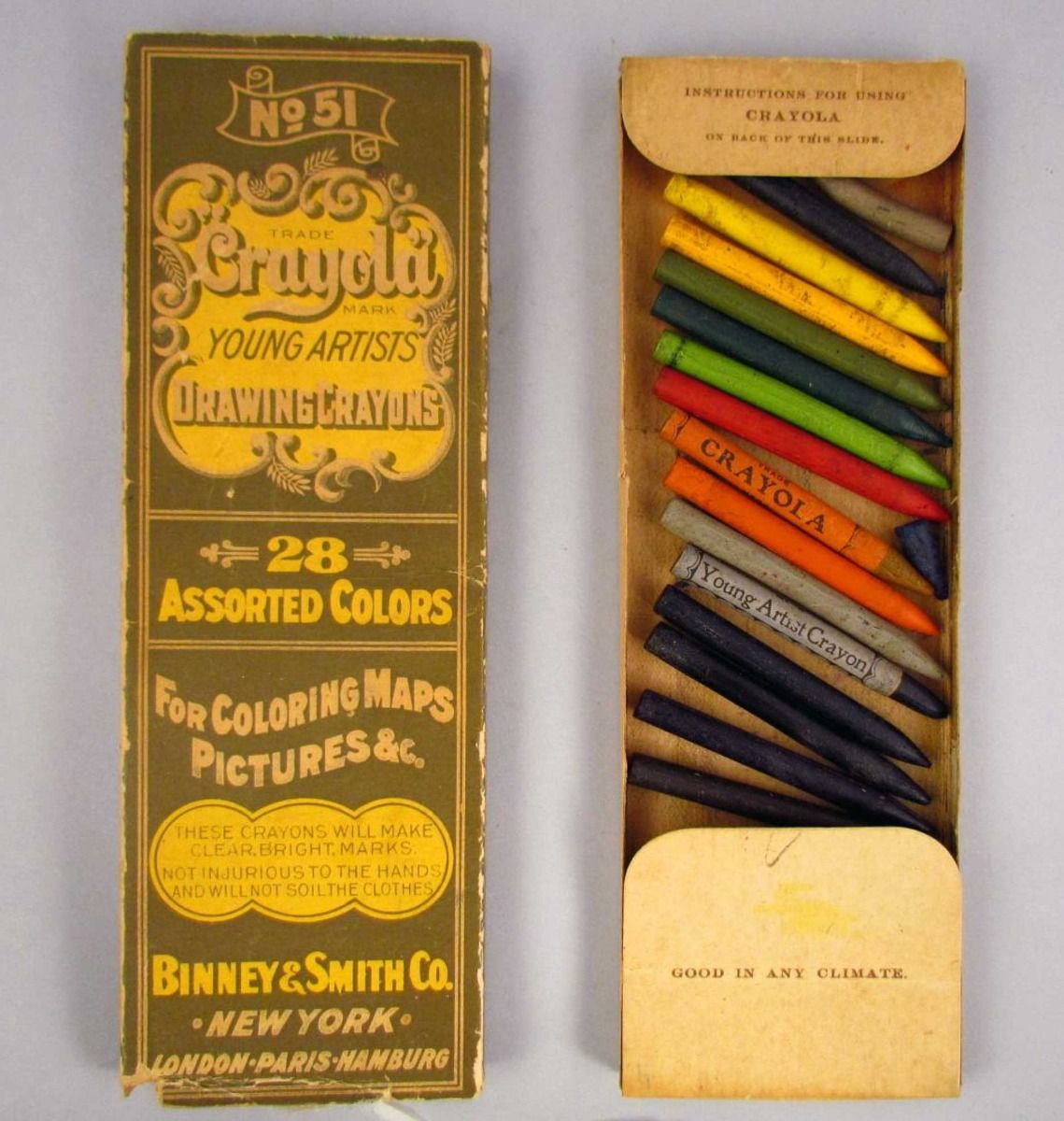
The Binney & Smith Company, producers of Crayola crayons, introduced the crayon color Venetian Red in 1903. The color was in No. 51 Box from 1903 until 1944. [13]
Today, Venetian Red is still widely used in various applications, including painting, pottery, textiles, and even interior design. Its rich, warm tone and ability to maintain its vibrancy over time make it a popular choice for artists and designers alike.
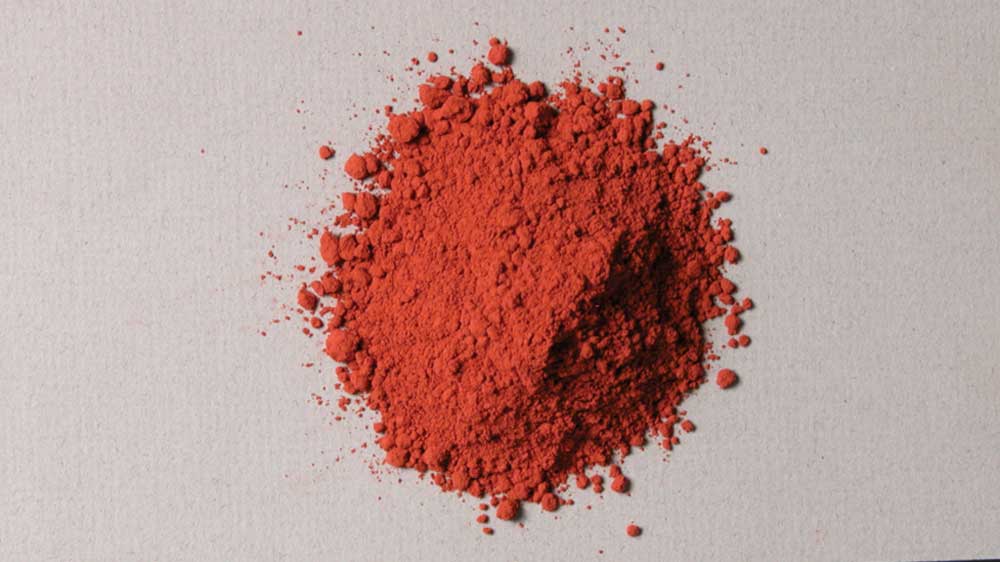
The Making of Venetian Red
Venetian Red is made from iron oxide earths which historically was found in the Veneto region of Italy. This earth is mined and then processed to extract the iron oxide, which is then ground into a fine powder. The natural red ochres contain varying amounts of iron oxides, mainly as hematite (a-Fe2O3). These iron oxides are in a matrix of white minerals like kaolin (Al2Si2O5(OH)4), talc (Mg3Si4O10(OH)2), gypsum (CaSO4•2H2O), chalk (CaCO3) and quartz (SiO2). Typically, gypsum is the primary accessory mineral in Venetian Red. The primary chromophore in red ochres is iron sesquioxide. The range of ochre colors, from yellow to dark red, depends on the presence and proportions of iron oxide and hydroxide.
The terminology for iron oxide pigments has been complex and inconsistent. Ochre and earth pigments were named according to the place of extraction or commercial trade, and the use of the name of another pigment with similar color was common. Natural earths are also named raw when used as they were extracted or burnt if burned or calcined to acquire a darker shade.
Venetian Red was initially made by grinding natural red iron oxide or hematite, but as the commercial production of ready-to-use paint developed in the 19th century, the name was transferred by European pigment manufacturers to the synthetic product made by calcining copperas with more or less chalk or gypsum that gave a red pigment consisting of about 28 percent iron oxide and 72 percent of terra alba or gypsum. Paint manufacturers in the latter half of the 19th century produced a red iron oxide pigment labeled English Venetian Red, to make things even more confusing, consisting of 35 to 40 percent iron sesquioxide with the balance usually being gypsum. [14]
John Oliver, a manufacturing chemist from Newcastle upon Tyne, England, patented “improvements in the manufacture of Venetian red” in 1853 (British Patent No. 655). His improvement in the manufacture of Venetian Red started with a solution of iron chloride instead of iron sulfate, as was typical of this period. [15]
Properties of Venetian Red
The natural form of Venetian Red is made from iron oxide, gypsum, terra alba, and other materials associated with the mineral hematite. The exact constituents of this pigment vary from region to region, but they essentially remain the same. The pigments are carefully ground and processed to create a smooth, consistent color that was easy to use.
Prior to the 20th century, synthetic Venetian Red was made by the copperas process, which involves direct roasting of iron sulfate at high temperatures with stoichiometric quantities of sulfur oxides being separated off. [18] Iron oxides of the copperas process generate by-products that are extremely problematic, as their corrosiveness and toxicity require intensive waste gas cleaning. The iron oxide pigments formed during the roasting process still contain soluble metal sulfates that need to be removed by washing before the pigment can be dried. The wastewater contains iron sulfate, together with other soluble heavy metal sulfates, and requires very complex cleaning or needs to be disposed of.
The copperas process begins with the precipitation of iron oxide from iron(II) sulfate or chloride, with the precipitation accomplished using lye such as sodium hydroxide. Given the high temperature required for the precipitation process, it is very energy-intensive compared to other processes and also requires an immense amount of water.
Since the 20th century, three other methods are used to make synthetic iron oxides—Laux, calcination, and Penniman processes. In the Laux Process, iron oxide is obtained as a by-product of the aniline process. The main pigment obtained by this process is black iron oxide, and also some amount of yellow iron oxide. These pigments are sold directly or used to prepare red iron oxide by the calcination process. The calcination process starts with black iron oxide oxidizing to yellow iron oxide and then dehydrating it to red iron oxide pigments. High temperatures are required for this process. Precisely controlling the process parameters also allows the production of brown pigments. The Penniman process reacts metallic iron with oxygen from air and acids as catalysts to obtain yellow iron oxides. Recent innovations in the process have been developed to also give red and black iron oxide pigments.
To make synthetic Venetian Red, red iron oxide produced using one of the above processes is mixed with chalk in proportions of one to four or less, depending upon the desired shade of red. Other extender pigments provide different density and hue properties that may be desired by the manufacturer. The resulting hues and tints with white will be different from one sample to the next, so that the hue is not standardized.
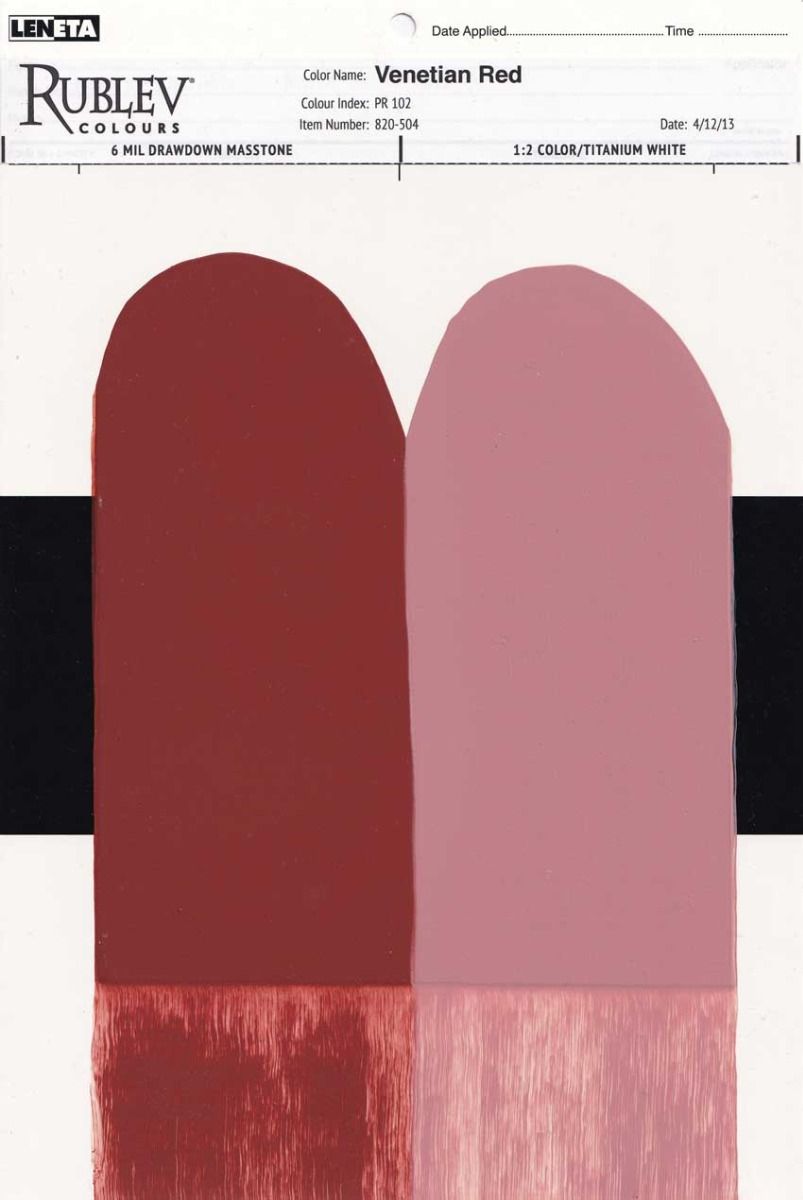
Rublev Colours Venetian Red Artist Oil Drawdown, six mil thickness, full strength on the left and 1:2 with titanium white on the right.
Compatibility and Permanence of Venetian Red
One of the key advantages of Venetian Red is its longevity. It is compatible with all other pigments and is stable in a wide variety of environments, acidic and alkaline. In addition to its stability, Venetian Red is highly lightfast, meaning it will not fade or discolor when exposed to light. This makes it an ideal pigment for use in paintings and other art forms that will be displayed in bright or well-lit environments.
Writers of the past two centuries, such as Church, state that Venetian red alters the color of certain organic pigments, such as indigo, when used in watercolor. They claim this is due to the presence of sulfates in the pigment. However, this may be true in regards to synthetic forms of Venetian Red pigment produced in past centuries, made from green copperas, due to the presence of sulfur-containing impurities.
A Versatile and Permanent Bright Red Pigment
Venetian Red is a warm and vibrant red pigment used for centuries in various art forms. Its unique tone and stability make it an ideal pigment for use in paintings and other art forms, and its rich history in art and culture makes it a fascinating and essential part of art history.
Pigment Information
The properties in the table below apply to the Rublev Colours Venetian Red pigment and not other brands of types named Venetian red. The source of Rublev Colours Venetian Red pigment is a natural red earth from quarries in the vicinity of Verona, Veneto region, Italy
| Pigment Names | |||||||
| Common Names: | Chinese: 威尼斯红 French: Rouge vénitien German: Venezianisches Rot Italian: Rosso veneto, Terra rosso Japanese: ベネチアンレッド Russian: Венецианский красный Spanish: Rojo veneciano | ||||||
| Alternate Names: | Caput mortuum vitrioli, colcothar, crocus, rouge Mars red is the name of the synthetic precipitated form of red iron oxide. | ||||||
| Nomenclature: |
| ||||||
| Pigment Specification | |
| Color: | Red |
| Colour Index: | Pigment Red 102 |
| Chemical Name: | Iron Oxide |
| Chemical Formula: | Fe2O3 |
| ASTM Lightfastness Rating | |
| Acrylic: | I |
| Oil: | I |
| Watercolor: | I |
| Properties | |
| Density: | 147 lbs./ft3 |
| Hardness: | 5.5–6.5 |
| Refractive Index: | 4.8–5.26 |
References
[1] E. Iriarte, A. Foyo, M.A. Sánchez, C. Tomillo, “The origin and geochemical characterization of red ochres from the Tito Bustillo and Monte Castillo Caves,” Archaeometry 51. 2009. 231–251.
[2] K. Helwig, Harley, Rosamond Drusilla, “Iron oxide pigments—natural and synthetic,” Artist's Pigments, A Handbook of Their History and Characteristics, Vol, 4, National Gallery of Art: Archetype Publications. 2007.
[3] M. Elias, C. Chartier, G. Prévot, H. Garay, C. Vignaud, “The colour of ochres explained by their composition,” Materials Science and Engineering B 70. 2006. 80. 127.
[4] D. Bikiaris et al., “Ochre-differentiation through micro-Raman and micro-FTIR spectroscopies: application on wall paintings at Meteora and Mount Athos, Greece,” Spectrochimica Acta Part A: Molecular and Biomolecular Spectroscopy 56 (1). 2000. 3–18.
[5] Maerz, Aloys John., Paul, Morris Rea. A Dictionary of Color. United Kingdom: McGraw-Hill, 1950. 201; Color sample of Venetian red: page 35 Plate 6 color sample I12.
[6] Merrifield, Mary Philadelphia. Original Treatises: Dating from the XIIth to XVIIIth Centuries on the Arts of Painting, in Oil, Miniature, Mosaic, and on Glass; of Gilding, Dyeing, and the Preparation of Colours and Artificial Gems; Preceded by a General Introduction; with Translations, Prefaces, and Notes. United Kingdom: J. Murray, 1849. 171–172.
[7] Cennini, Cennino. Cennino Cennini's Il Libro Dell'arte: A New English Translation and Commentary with Italian Transcription. United Kingdom: Archetype Publications Limited, 2015.
[8] Batur, Katarina, and Irena Radic Rossi. “Archaeological Evidence of Venetian Trade in Colouring Materials: The Case of the Gnalić Shipwreck.” Trading Paintings and Painters’ Materials 1550–1800, 2019. 116–120.
[9] Agricola, Georgius. De Natura Fossilium (Textbook of Mineralogy). United States: Dover Publications, 2004. 28.
[10] History of Stones. With an English Version and ... Notes, Including the Modern History of the Gems Etc. by John Hill. (etc.). United Kingdom: Davis, 1746. 122, note 9.
[11] Church, Arthur Herbert. The Chemistry of Paints and Painting. United Kingdom: Seeley, 1890.160–161.
[12] Nineteen Ninety Five Paint Questions Answered: A Sequel to “1,000 More Paint Questions Answered.” United States: Painters Magazine, 1923. 538.
[13] Venetian Red - Crayola Wiki – Fandom. https://crayola.fandom.com/wiki/Venetian_Red
[14] Uebele, Charles Ludwig. Paint Making and Color Grinding: A Practical Treatise for Paint Manufacturers and Factory Managers, Including Comprehensive Information Regarding Factory Arrangement; Pigments; Vehicles and Thinners; Liquid and Cold Water Paints as Well as Practical Working Formulas and Recipes. United States: Painters Magazine, 1913. 206–208.
[15] English Patents of Inventions, Specifications: 1853, 655–700. United Kingdom: H.M. Stationery Office, 1853.
[16] Donahue, Kenneth., Pignatti, Terisio. The Golden Century of Venetian Painting. United Kingdom: Los Angeles County Museum of Art, 1979. 84.
[17] Harley, Rosamond Drusilla. Artists' Pigments C.1600-1835: A Study in English Documentary Sources. United Kingdom: Archetype, 2001. 122.
[18] Dr. Waldemar Czaplik, “A New Development in Penniman Red Production.” PCI Magazine. Last viewed February 15, 2022.
Uncovering Venetian Red: The Pigment that Recalls the Italian Renaissance
Discover the red earth pigment that evokes the Italian Renaissance: Venetian Red. We explore where this pigment originates. How to make Venetian red oil paint. We uncover the unique hues of this red ochre when mixed with white, red, green, and yellow pigments in oil paint.
Frequently Asked Questions
What is Venetian Red made from?
What makes Venetian Red unique?
Venetian Red is unique due to its rich, warm tone and ability to maintain its vibrancy over time. Unlike other red pigments, Venetian Red is incredibly stable and resistant to fading and discoloration.
Why was Venetian Red popular during the Renaissance?
Venetian Red became popular during the Renaissance because of its warm, vibrant tone and ability to maintain its color over time. Artists such as Titian, Tintoretto, and Veronese used Venetian Red in their paintings to create bright and colorful works of art.
Is Venetian Red still used today?
Venetian Red is still used today in a variety of art forms, including painting, fresco, and pottery. Its rich, warm tone and stability make it a popular choice for artists.
What are the properties of Venetian Red?
Venetian Red is known for its rich, warm tone and stability. It is resistant to fading and discoloration and is also highly lightfast, meaning that it will not fade or discolor when exposed to light.
Yet More Frequently Asked Questions
What was special about the color red during the Renaissance?
During the Renaissance, red was highly valued for its vibrancy and visual impact. It was often associated with power, wealth, and religious significance. Red pigments like Venetian Red were sought after for their richness and ability to maintain color over time. Artists used red to highlight important figures or elements in their paintings, underlining its importance in the art of the period.
What was traditionally used as a red pigment from ancient times?
Historically, red pigments were derived from various natural sources. Ochre, made from naturally tinted clay containing mineral oxides, was one of the earliest red pigments. Another ancient red pigment was vermilion, derived from the mercury sulfide mineral cinnabar. These pigments were valued for their vivid hues and were used in artwork and decoration from prehistoric times through the Renaissance.
What was the color theory of the Renaissance art?
Renaissance color theory was largely based on the ideas of light and shadow, which artists used to create depth and realism in their work. They often adhered to a naturalistic palette, using colors that imitated the natural world. Artists like Leonardo da Vinci and Michelangelo focused on how light interacted with surfaces and how colors could depict this interaction. The theory emphasized the harmonious blending of colors and the use of contrasts to bring life to paintings.
What were the common red pigments used in the Renaissance besides Venetian Red?
Besides Venetian Red, other popular red pigments during the Renaissance included Vermilion (made from cinnabar), Carmine (derived from cochineal insects), and Madder Lake (from the madder plant). These pigments were prized for their distinct shades of red and were used for different effects and symbolism in art.
How did the use of red in art evolve from the Renaissance to Baroque periods?
In the Renaissance, red was used to signify importance and draw attention. In the Baroque era, the use of red evolved to convey drama, intensity, and emotion. Artists in the Baroque period employed red more dynamically, using it to create a sense of movement and passion in their works. This shift reflected the overall transformation in art from the detailed, balanced compositions of the Renaissance to the more dramatic, emotive style of the Baroque.
Are there any significant differences between Venetian Red and other red pigments in terms of composition and use?
Venetian Red is distinguished by its warm, earthy tone and its composition, primarily consisting of iron oxide. Other red pigments, like Vermilion and Carmine, have different chemical compositions and thus exhibit different qualities in terms of hue, lightfastness, and opacity. These differences influenced how and where each pigment was used in artwork.
Can modern artists still use traditional red pigments like Venetian Red?
Yes, many traditional pigments, including Venetian Red, are still available to modern artists. Some are produced using historical methods, while others are now synthesized to mimic the original's properties. These pigments are used in restoration work as well as by artists who seek the authentic colors and textures of traditional materials.
How do the properties of red pigments affect their conservation over time?
The durability of red pigments varies depending on their composition. Some, like Venetian Red, are known for their stability and lightfastness, meaning they don't fade easily over time. Others, like Carmine lake, can be more sensitive to light and environmental factors. Conservation efforts for artworks featuring red pigments often focus on protecting them from light exposure and other conditions that could cause deterioration.



